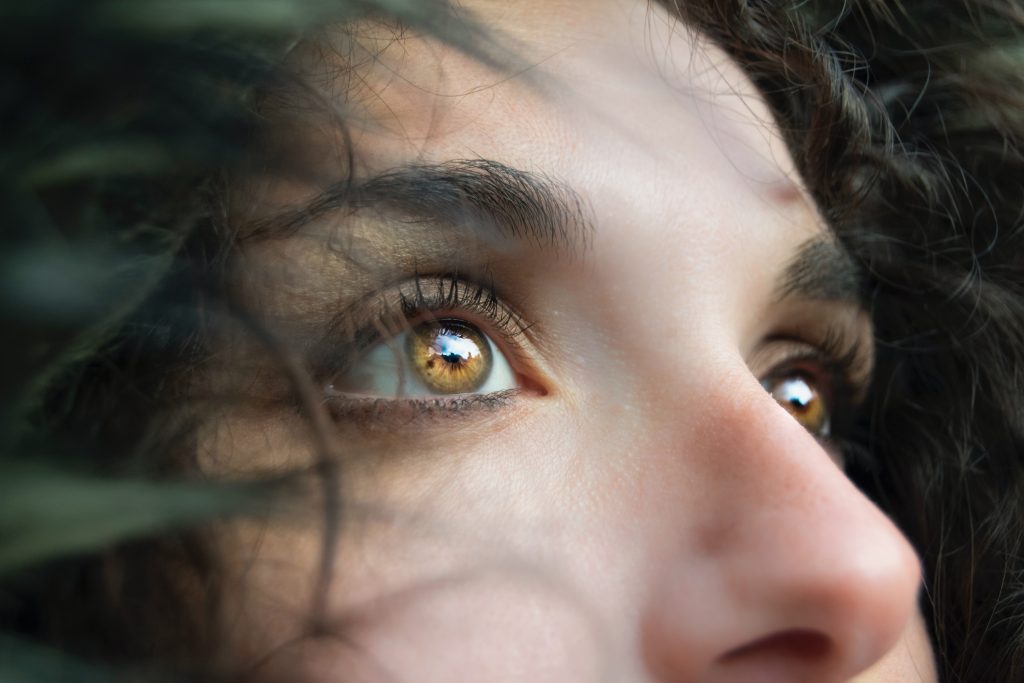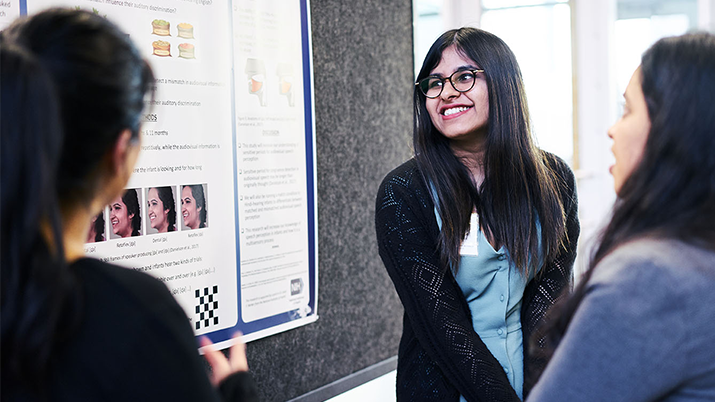Have you ever wondered about the communicative power of human eyes?
New research by Dr. Veronica Dudarev, a postdoctoral research fellow, Dr. Alan Kingstone, a professor, and Manlu Liu, a graduate student—all in UBC’s department of psychology—shows that, “when people’s eyes are not visible to others andcannot show where their attention is directed, people will not conceal where they are looking.”
In other words, when people’s eyes are physically camouflaged from others, they will make overt eye movements that do not conform to societal norms.
The study was recently published in the journal Cognition. The researchers studied 52 participants by showing them pictures of runway models either fully clothed or wearing a bathing suit. They found that when participants wore sunglasses, they looked longer at the latter, provocative images. We interviewed Dr. Dudarev to learn more about this work and how it can help researchers measure gaze and attention more precisely.
What were you trying to determine in this study?


Dr. Veronika Dudarev
Everyone knows that to take in visual information from the world we use our eyes. Where we direct our eyes, however, can also communicate to other people something important about ourselves. It is believed that this communicative power of eyes is so important to humans that unlike other primates, our eyes evolved in a manner that makes it easy for people to see where, and what, we are looking at. The present study tested this belief by asking if we “de-evolve” (camouflage) human eyes, so that it is hard to determine where and what another person is looking at, will people begin to look at things that they would not look at normally in the presence of others?
“Our study opens a range of questions about how different attentional systems work in concert to provide us with clear world view.”
How did the study work?
To de-evolve human eyes we had people wear sunglasses. Or as a control, they wore clear glasses. We found that only when people wore sunglasses in the presence of others did they show a bias towards looking at sexualized images — runway models in underwear or swim wear.
How can camouflaging the human eye change how we view the world?
We look at things to take in information. But where we look can also signal to others what we are interested in, and this can suggest to others things about ourselves. People who wear sunglasses do not have to strike a balance between taking in information from the world and signaling to others something about themselves. Instead, they can just take in information without any concern about what they might be communicating to others. In principle, this can be quite liberating and powerful.
How can these insights help researchers measure gaze and attention more precisely?
Studying where people look to understand what they are interested in is complicated by the fact that people might look at things as a form of impression management. In our study participants believed – incorrectly! – that we could not see where they were looking because they were wearing sunglasses. So we were able to gain a pure measure of what people are interested in. Additionally, by comparing how this camouflaged looking behaviour is different from their normal, communicative looking behaviour, we can also measure how this communicative component impacts normal looking behaviour.
The research was conducted in the Brain, Attention, & Reality (BAR) Lab which is led by Dr. Alan Kingstone.
We aim to connect our attention research with the people and the world around us. We do this by asking questions that we believe relate directly to people as social animals, often taking account of the fact that many of us live in a technological world. We are always looking for fun and interesting lines of research, as well as new ways of studying human behaviour, social attention and the brain. The lab’s multidisciplinary research program includes work with children, patients, and healthy adults using a variety of techniques (e.g. natural observation, eye tracking, brain imaging, body motion tracking) aimed at answering questions ranging from basic aspects of visual attention to more complex aspects of social cognition.



